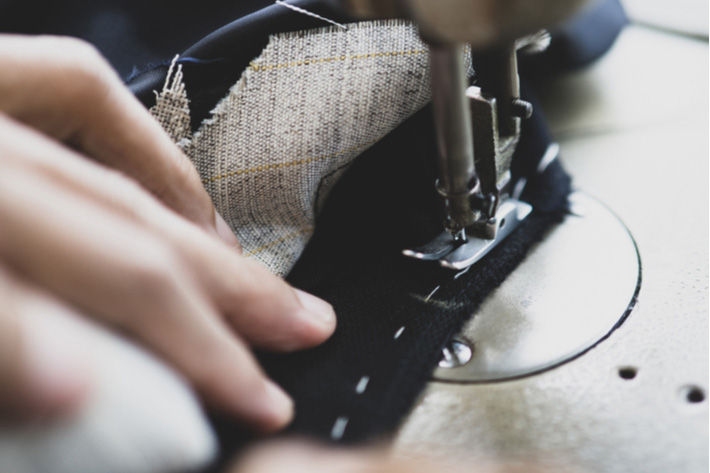Indian textile-apparel industry needs orderly circular transition: CRB

Opportunities are also emerging for attracting international and domestic sources of sustainable (ESG) finance, especially with the government developing a road map on sustainable finance, it said in its report titled ‘Circular Textile and Apparel in India: Policy Intervention Priorities and Ideas’.
A continued and concerted support involving various segments of the government at all levels is needed to create the enabling environment for circularity, the report said.
Skill and capacity building of workers and entrepreneurs is required and is critical, especially from the point of 'just transition'. This will ensure that a circular transition not only creates new job opportunities but also existing jobs are protected in a transitioning sector, it said.
The CRB team has identified circular economy (CE) interventions based on secondary research and extensive stakeholder consultations across various value chain actors, especially with domestic and international brands, suppliers and manufacturers, dyeing and chemical companies, academia, innovators and state government officials.
These ideas, aligned to the CE priorities defined in the framework, have been broadly categorised as actions proposed for practitioners and as possible policy interventions.
The report makes several policy recommendations. Clear design guidelines should be defined indicating the types of material to be used (virgin plus recycled), chemicals to be avoided or used, design for durability, and the design for end-of-life processes or purposes. Cost of collection for end of life should be factored in, with clear labelling (transparency and traceability).
The report recommends the government to issue an advisory on textile production parameters and processes and constitute a task force that can facilitate setting of industry guidelines for circular design and manufacturing among the industry players.
Wastewater effluent standards for the textile and dyeing industries should be developed by the Central Pollution Control Board (CPCB) along with the state pollution control boards under the supervision of the ministry of environment, forest and climate change, it suggests.
There is a need to work with alternate materials that are less water and energy intensive, can be easily recycled, and are more durable, the report suggests. Emphasis has to be given to man-made fibres and extensive research is needed both for alternate materials and on cost effective recycling technologies.
Further innovation in these areas should be supported. Transparency and traceability will be required to authenticate material sources and fibre content to support recycling.
Policy actors can define a ‘content law’, provide incentive and tax perks for use of alternate materials. Sustainable public procurement can provide impetus to use of alternate and recycled materials. Clear labelling and quality norms for apparel made from recycled materials will instil confidence amongst consumers, the report says.
Monitoring chemical use in fibre manufacturing, washing, dyeing and garment manufacturing needs to be emphasised. Regulation can play a crucial role in banning or defining the quantities and discharge of hazardous chemicals. Incentives can be provided for use of natural dyes and for uptake of waterless dyeing techniques that can considerably reduce water pollution.
Pre consumption waste can either be reduced through technology adoption (for larger units) or through linking production units to up cyclers/ recyclers to prevent waste from going to landfills. Consumers need to be educated and incentivised to recycle used garments. Reverse logistics need to be considerably strengthened to support a recycling /upcycling/ repair eco-system.
The need for energy efficient machinery and use of cleaner energy is well understood amongst the industry actors. However, a need for a stable policy has been identified as a major requirement, the report notes..
Policies can be implemented to prioritise renewable energy over conventional sources. Policy must be long-term and stable as renewable energy requires large investments from companies. Innovation at MSMEs should be promoted (including handicrafts), focussing on in-situ technical and technological innovations.
Official case studies should be documented and scaled and replicated elsewhere. The Technology Upgradation Funds Scheme (TUFS) should be amended to include more energy efficient technologies and equipment, the report suggested.
The industry can undertake detailed water audits to measure its water footprint along its operations and identify measures to reduce water consumption. Technologies for wastewater treatment are very costly at the moment and adoption at scale is hindered, it recommended.
Fibre2Fashion News Desk (DS)
































-Ltd..jpg?tr=w-120,h-60,c-at_max,cm-pad_resize,bg-ffffff)





.jpg?tr=w-120,h-60,c-at_max,cm-pad_resize,bg-ffffff)
.jpg?tr=w-120,h-60,c-at_max,cm-pad_resize,bg-ffffff)






